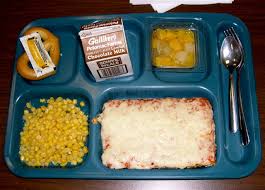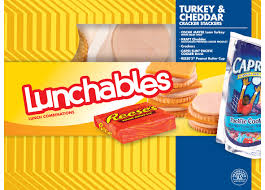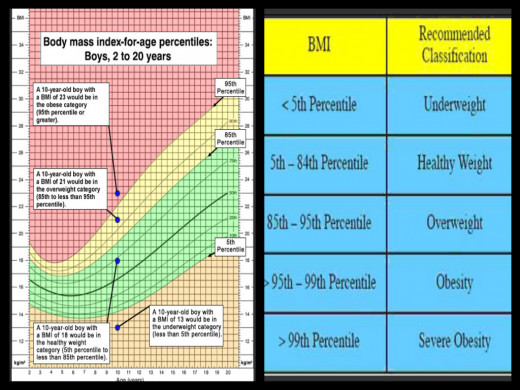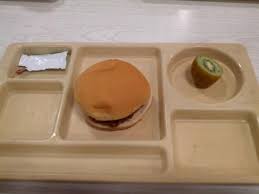School food and your child's health
First of all I would like to point out that I am not an expert as I have no children. BUT I do have family and friends with children in the public school systems. Over the past few months/years, there has been a lot of news about the food your children are being served at school and what the children are or are not allowed to bring to eat in their personal lunches. Some people agree and some people do not agree. This short article is based solely on my opinion – with a little knowledge thrown in. This mainly applies to young children who stay in one class room while at school.
A good, healthy lunch!


The School's Responsibility:
The school is responsible for the well being of the children while they are at school. The school is responsible for teaching the students. All students should go through a “health” class that can teach them about eating healthier, portion control, and exercising. The school should be expected to serve healthy food to the children. It is the school's responsibility to treat all of the children with the same respect and not to single out any child based on what he/she is eating for lunch.
The school is NOT responsible for monitoring students' lunches that are brought from home. If the parents want to send the child to school with a bowl of leftovers from dinner the night before, that is GREAT! At least they are not wasting food. If the parents want to send the child to school with a sandwich and chips or a pre-packaged meal (such as a “Lunchable”), this is okay as well. The parents at least care enough that they are making sure their child has something to eat. If the child brings a small bag of almonds, an apple, and some cheese for his/her lunch, then maybe the child is on a special diet.
A Suggestion for Schools:
There has been a lot of news lately about kids being refused food because of lack of money. One lady even lost her job for giving food to those children. The schools I attended when I was growing up had special programs for reduced cost and free lunches for low-income families. The parents simply had to apply for the program and their child/children would be able to eat. If a student forgot his/her lunch money and was hungry, he/she could talk to the ladies serving lunch and get a peanut butter sandwich at no cost.
I believe that every school should have a charity fund set up that will cover the cost of meals for children who have forgotten their lunch money or who's family cannot afford to send money. The school could send out messages to parents and local businesses about donating to the fund as a way to keep money in the account.
Healthy vs Unhealthy Snacks


Snacks:
The rules on bringing snacks will vary greatly from state to state, county to county, school to school, and even class to class. If the school allows snacks to be brought for a group of children, such as for a birthday party, then the school should have some control over what is allowed. The school board should decide if parents are allowed to bring only healthy snacks or if sweets can be brought. If the school board is allowing snacks to be brought, do the snacks have to be store bought or can they be homemade? If the school allows all kinds of snacks, then it should be up to the teachers as to what is allowed in each class – Yes, the teacher has a say before the parents. The teacher can put a limit on what snacks are brought and how often they can be brought. In a class of 25 students, it can be very disruptive of the class if each student had a parent or parents show up randomly show up with sweets. Many teachers allow birthday parties one day a month at a set time as a way to limit the time taken away from learning.
As with above, if the school and the teacher allow individual students to bring snacks, the they can have some control over what the children bring as snacks.
The Body Mass Index

Exercise and the Body Mass Index
While it is important for the school to help teach students about proper exercising, students should not be required to pass fitness exams. I strongly believe that schools should not be allowed to judge students based on the BMI charts. Each child is different and should not be judged based on what is the “suggested” weight. A child's weight should be a concern of the parents and the family's doctor – not the school.
I recently had a Facebook friend post a copy of a letter from the school claiming that her son was obese according to the BMI. She also showed a picture of her son who is thin and fit for his age. This is basically a form of body shaming done by the school and should not be allowed.
The Exceptions:
As with every rule, there are going to be exceptions. If a child is extremely obese, bringing only junk food to eat, and unable to exercise – then the school should be able to contact the parents for a conference. The school should find out if there is a medical reason for the child's weight before blaming anyone. If the parents are obese, perhaps the school could help the parents get in touch with a dietitian to discuss better eating habits. At no point should the child be singled out by the school for being overweight.
Reduced Amount of Food


The recent changes:
In an attempt to make children eat healthier, Mrs. Michelle Obama forced schools to change the food they were giving to the children. While I will give her an “A” for effort, I still have to say that it is a failure. The amount of food each child is given has been cut in half for most students and the changes has caused the price of lunch to increase. Children need enough food to be able to think and function in order to do well in school. Also consider that for some children, the food they get at school may be the only food they get each day. Another problem with the changes are that the “approved” lunches are not appealing to most of the children. Children are often picky eaters and schools are better off serving healthier versions of what children like to eat.
As far as using the BMI and judging children based on their weight, shame on you - Mrs. Obama! You are using your position of power to encourage body shaming of children by the people who are supposed to positive influences. This not only damages the children who are judged to be fat by the school, it also encourages other children to be judgmental of their peers based on appearance alone.








